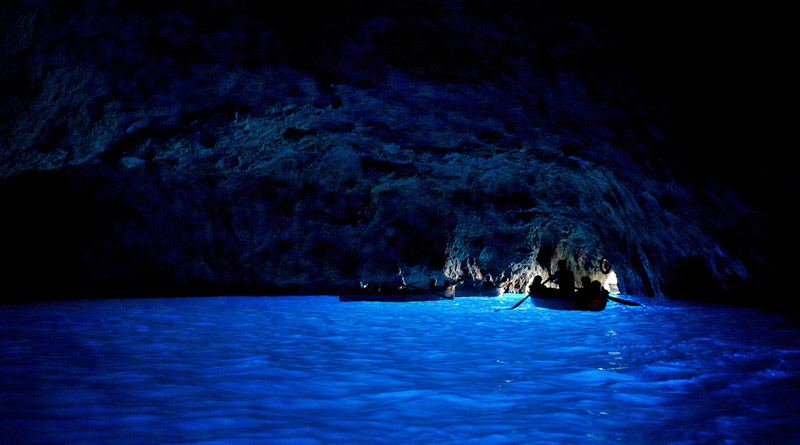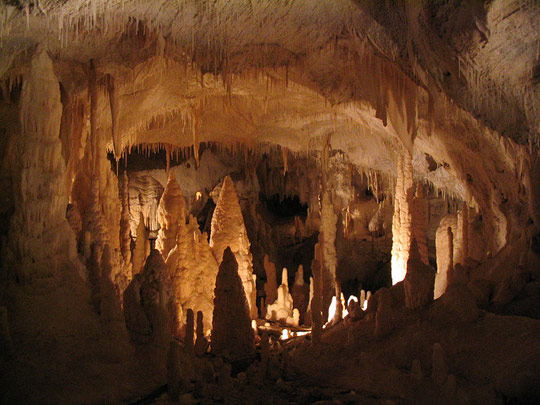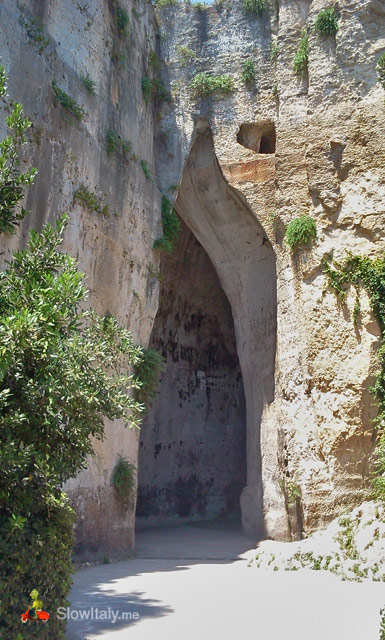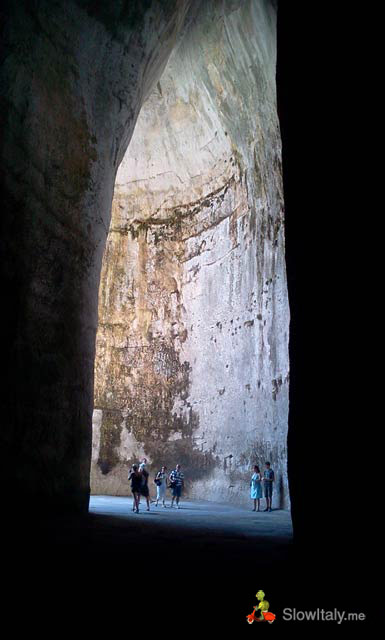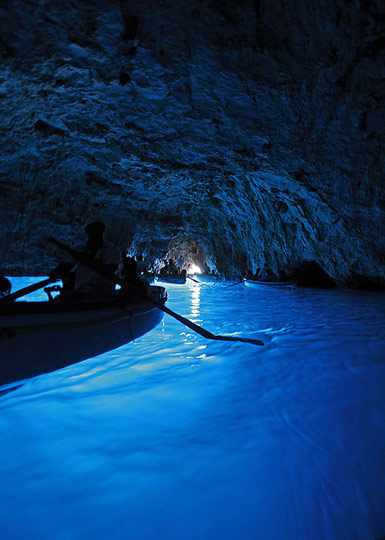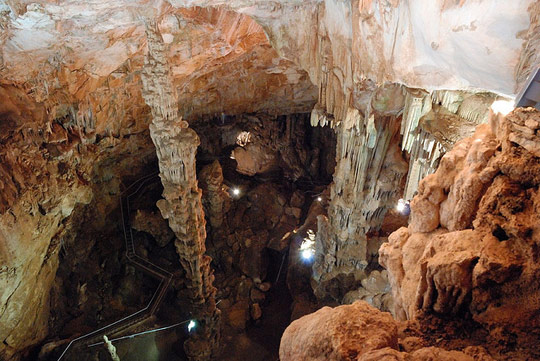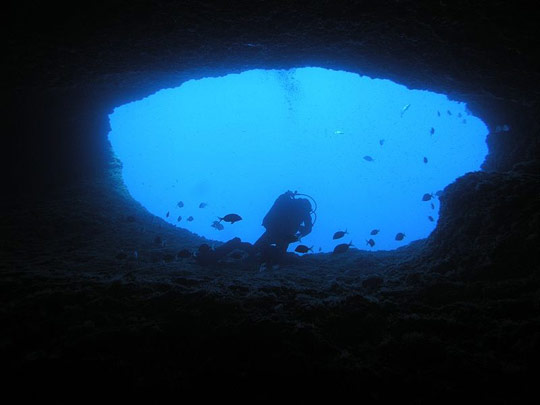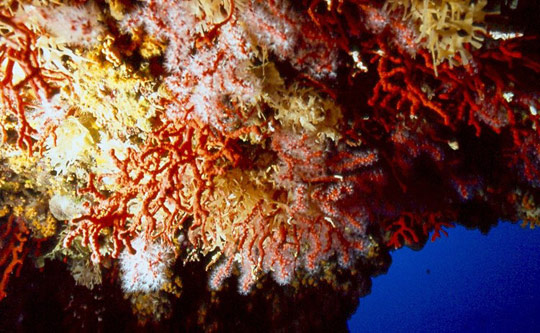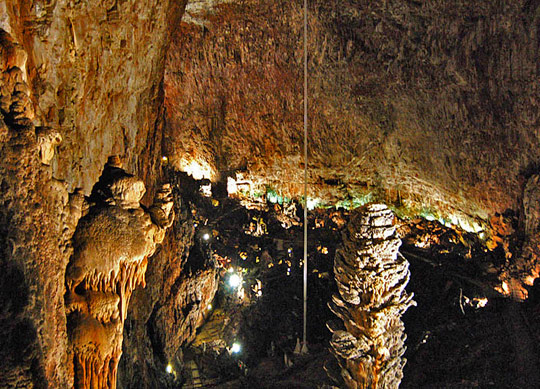Top 8 most spectacular caves in Italy
Some of the most beautiful underground and underwater gems that can be found at all corners of Italy.
1. Frasassi, Genga (Marche)
The vast network of caves known as Frasassi grottos is the largest cave system in Europe. The grottos owe their name to the Hermitage Sanctuary of Santa Maria infra saxa, dug in the rock at the entrance of the caves, which pronounced by the locals over time became ‘frasassi’. The largest cave, the Grotto del Vento is composed of seven chambers decorated with magnificent stalagmites and stalactites and other formations in a variety of colors.
At about 1.5 km from the entrance of the main Frasassi cave is a cavity called Grotta del Santuario, where the architect Giuseppe Valadier built a chapel, the Tempietto del Valadier, in 1828. See more at: top 5 most amazing chapels in Italy.
2. Ear of Dionysius (Orecchio di Dionisio), Siracusa (Sicily)
Originally an old limestone quarry the cave was called the Ear of Dionysius by Caravaggio during his visit to Sicily in the early 1600s, because of the its shape resembling an auricle and its acoustics amplifying even the faintest sounds. According to the legend Dionysius was able to hear his enemies without seeing them, thanks to the cave’s extraordinary echo.
3. Blue Grotto (Grotta Azzurra), Anacapri, Capri (Campania)
The Blue Grotto is one of Capri’s most visited sight, famous for its brilliant blue color luminescence. The sapphire light comes from the sunlight entering through two sources, a small hole precisely at the waterline and one directly below the waterline. The light is filtered by the water which absorbs the red tones, leaving only the azure ones to pass into the cave.
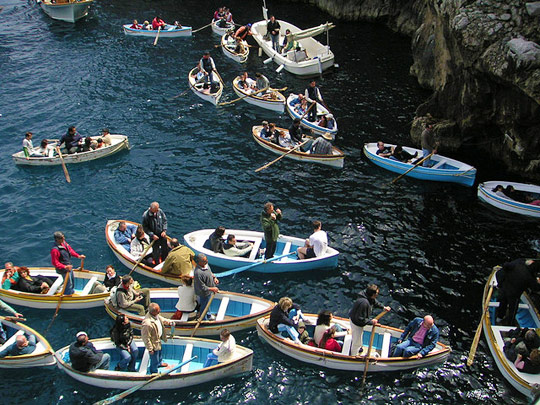
4. Grotta dell’Addaura, Palermo (Sicily)
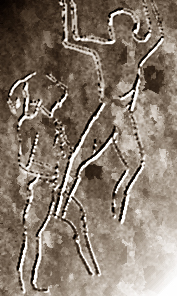 The small cave of Addaura on the outskirts of Palermo contains spectacular cave-wall engravings dated to the late Epigravettian (14,000 – 8,000 bp) and the Mesolithic. The engravings show an unusual scene of about sixteen human figures in diverse acrobatic postures. It also has engravings with horses, bulls and a deer.
The small cave of Addaura on the outskirts of Palermo contains spectacular cave-wall engravings dated to the late Epigravettian (14,000 – 8,000 bp) and the Mesolithic. The engravings show an unusual scene of about sixteen human figures in diverse acrobatic postures. It also has engravings with horses, bulls and a deer.
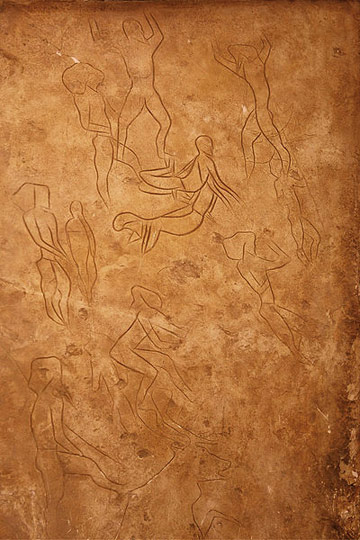
5. Grotta di Ispinigoli, Dorgali (Sardinia)
The Grotta di Ispinigoli is part of a karstic cave system which also include the grotto of San Giovanni Su Anzu. The main peculiarity of the Grotta di Ispinigoli is an impressive stalactite-stalagmite column, the tallest in Europe and the second tallest in the world, measuring about 38 m in total. The Grotto also includes a 60m deep funnel, known as the Abisso delle Vergini (Abyss of the Virgins), leading to a 12 km cave system connecting Ispinigoli to the other grotto.
6. Grotta di Nereo (Nereo Cave), Alghero (Sardinia)
The Grotta di Nereo is the largest underwater cave in the Mediterranean. It is located on the north west side of Sardinia, at a few kilometers of Alghero, beneath Capo Caccia. Because the cave is so vast with many openings and two main entrances, the honor of its discovery is disputed between several divers who discovered the cave separately in 1957.
7. Grotta Gigante, Sgonico (Friuli-Venezia Giulia)
The Grotta Gigante is a giant cave located in the municipality of Sgonico, on the Italian side of the Trieste Carso. The exceptional dimensions of its central cavern, 107 meters (351 ft) high, 65 meters (213 ft) wide and 130 meters (430 ft) long, put it in the 1995 Guinness Book of Records as the world’s largest tourist cave. Because of its enormous height the stalagmites inside the cave have a particular, “dish-pile” appearance, caused by the water dropping from up to 80 m (260 ft) above.
8. Grotta dello Smeraldo, Amalfi Coast (Campania)
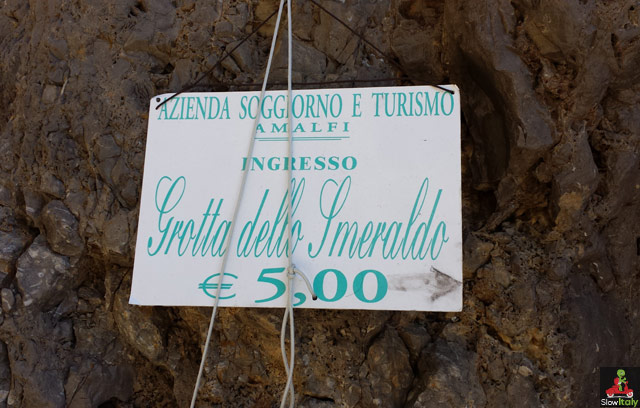
The Grotta dello Smerlado gets its name from the characteristic emerald glow caused by refracted sunlight entering the cave through the opening.
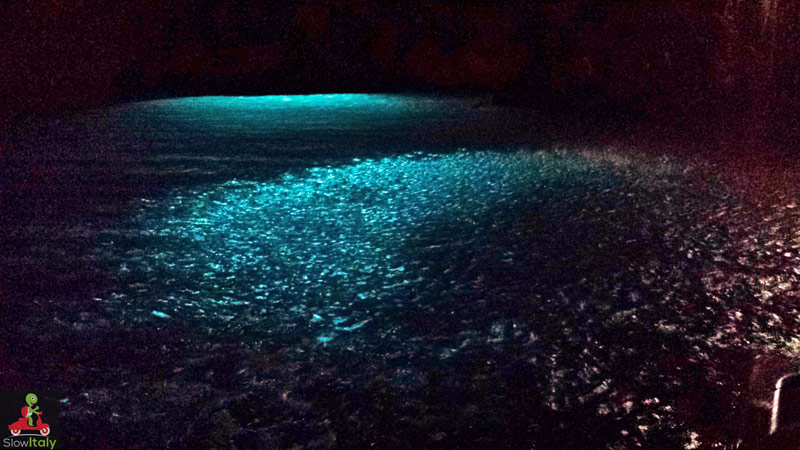
Photo credits (top to bottom): Featured image Grotta Azzurra by Thilo Hilberer; Frassisi by oRi0n; Genga chapel by OmarCaf; Ear of Dionysius entrance © Slow Italy; Ear of Dionysius inside © Slow Italy; Blue Grotto by ehpien; Blue grotto tourist boats by Tom Mascardo; Grotta dell’Addaura by José-Manuel Benito; Grotta di Ispinigoli by mastino70; Grotta di Nereo by Marco Busdraghi;

